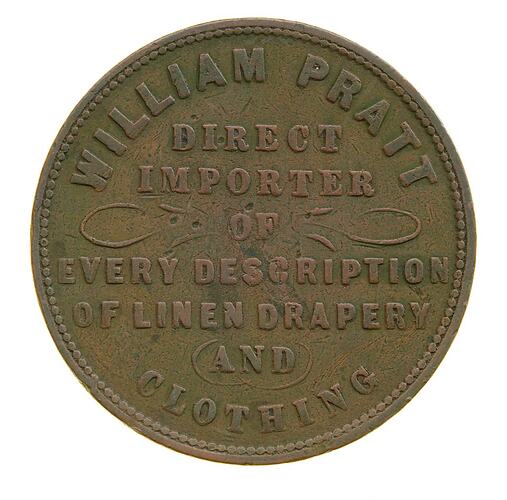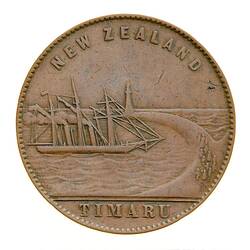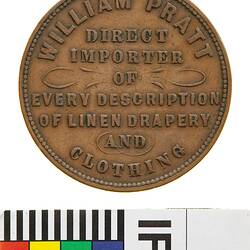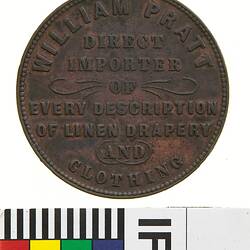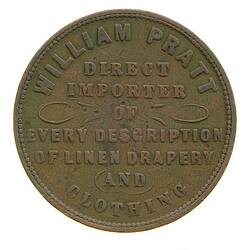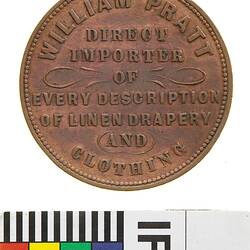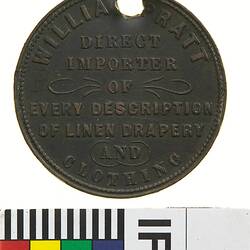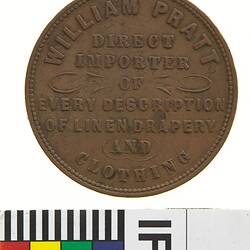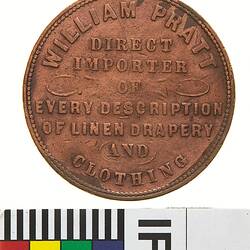Summarised from a business history published in They Made their Own Money, pp. 46-55:
During the six years between 1843 and 1849 Pratt was quite a rover, having interests ranging from ship-building, growing potatoes in Tahiti, to farming. In 1848 we find him book-keeping in a general store in Wellington.Hearing the prospects of the new Church of England settlement in Canterbury, he moved to Port Cooper (later called Lyttleton), in 1849. Having arranged first for stocks of goods for a general store, and also for the store itself by having a prefabricated store made in Nelson where timber was cheap.We find his advertisement in the centre of the front page of the Lyttleton Times of Saturday 11 January, 1851, offering a variety of widely assorted goods for sale at the general drapery store and bakehouse, Canterbury Street.
William Pratt was born in 1823 and after his education was apprenticed to the drapery trade. After working in London he migrated to New Zealand and arrived as one of the early settlers of Nelson on 4 February, 1843. After pursuing a range of occupations, including growing potatoes in Tahiti, farming in New Zealand and ship building, he was working as a book keeper in Wellington by 1848. The following year he moved to Lyttleton, Christchurch's port town. He had a prefabricated store made and shipped to him. The first public record that Canterbury numismatists could find of his business was an 1851 advertisement from the Lyttleton Times of 11 January 1851, in which his business was described as a 'general drapery store and bakehouse', located in Canterbury Street.
Pratt left that business in 1854, but after going back to Nelson for 9 years he once again returned to Christchurch and, after some set backs, bought the business at Dunstable House from David Clarkson, whose father Samuel was also a token issuer. Pratt took over ownership of the business in early January 1864.
Pratt was very successful at his new venture, and built a new brick building for the store, as well as a large warehouse. He sold the business to John Ballantyne in 1882, but kept ownership of the premises, in addition to the neighbouring property at the corner of Cashel and Colombo Streets, where Hobday and Jobberns, another token issuing business, had their business.
In addition to his business ventures, Pratt was also twice a member of the Christchurch City Council. His house, in Worcester Street, was still standing in 1950.
The history of the store does not include any further details about Pratt, other than to say that his estate retained ownership of the land mentioned above until the 1940s. Ballantyne's large and prestigious store was still in business in 1950. This source states that the most likely period for the issue of the tokens was between 1864 and 1872. The tokens were struck by W.J. Taylor of London.
References:
The Canterbury Branch of the Royal Numismatic Society of New Zealand (1950). They Made their Own Money: The Story of Early Canterbury Traders & their Tokens, pp. 46-55.
More Information
-
Keywords
-
Localities
-
Authors
Mr Adrian Regan, The Canterbury Branch of the Royal Numismatic Society of New Zealand
-
Article types
